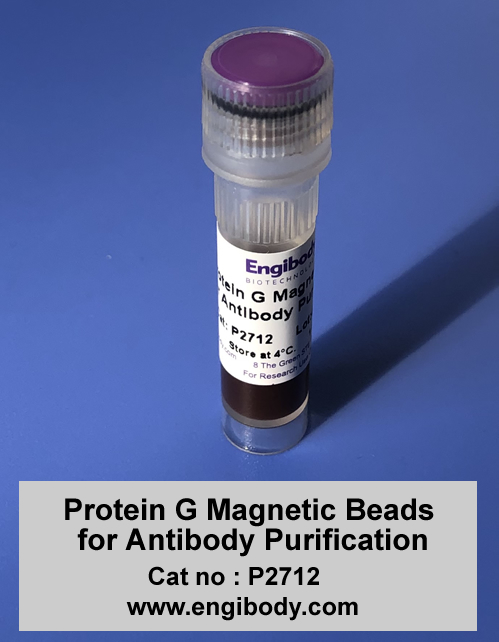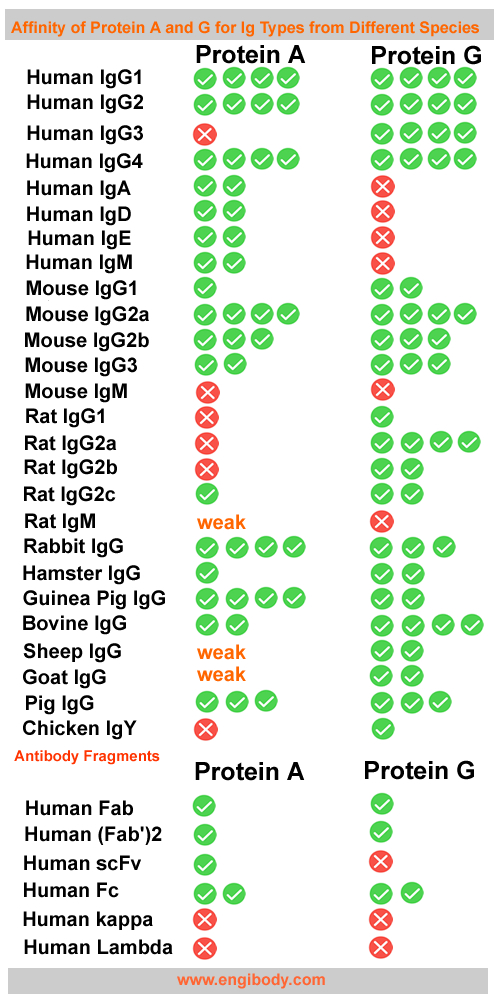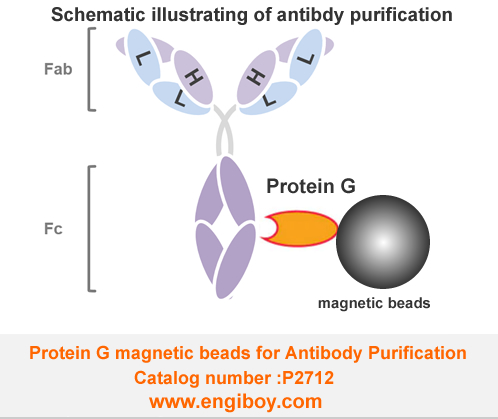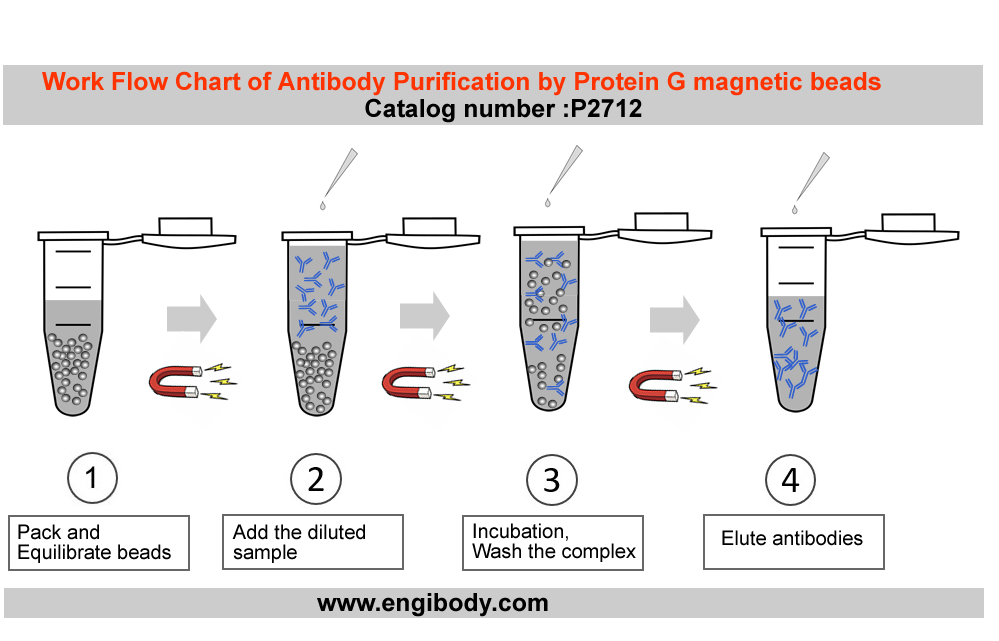Protein G Magnetic Beads for Antibody Purification
Catalog number :P2712
Protein G, a bacterial cell wall protein isolated from group G Streptococci, binds to mammalian IgGs mainly through Fc regions. Native Protein G has three IgG binding domains and also the sites for albumin and cell-surface binding. Albumin and cell-surface binding domains have been eliminated from recombinant Protein G to reduce nonspecific binding. Protein G has greater affinity than Protein A for most mammalian IgGs, especially for certain subclasses including human IgG3, mouse IgG1 and rat IgG2a. Unlike Protein A, Protein G does not bind to human IgM, IgD and IgA.
- Overview
- Description
- Protein G Magnetic Beads for Antibody Purification
- Tested applications
- Small-scale Antibody Purification
- Product Picture

- Specificity

Protein A and G are popular choices for antibody purification, because they are both stable and target selective. IgG class antibodies from multiple species bind to protein A and/or G, allowing antibody to be captured on protein-bound beads. Protein A and G bind IgG subtypes with varying affinities, determined by species and the properties of the heavy chain. This chart that reports the affinity of protein A and G for various species immunoglobulin subtypes.
- Properties
- Form
- 2ml 25% slurry
- Storage instruction
- Store at 4℃, DO NOT freeze.
- Beads Diameter
- average 40 μm
- Binding Capacity
- more than 10 mg mouse IgG per 1 ml settled beads (e.g. 4 ml 25% slurry)
- Ligand
- Recombinant protein G produced in E.coli
- Matrix
- Cross-linked agarose beaded particles containing the superparamagnetic core
- Chemical stability
- All commonly used aqueous buffers, including 6 M guanidine-HCl and 8 M urea.
- pH stability
- Long term: pH2 - 9;Short term: pH2 - 11
- Storage buffer
- 1x PBS containing 0.02% NaN3
- Applications
- Application Image

- Highlights
- High efficiency – equivalent or higher yield of IP target antigens than magnetic beads from other suppliers
Low non-specific binding – stable, pre-blocked beads provide highly purified product (e.g., antigen eluted in IP with antibody is devoid of contaminating protein from complex cell lysate)
Consistent – magnetic beads eliminate resin loss and provide for more efficient separation than traditional IP methods that use only centrifugation
- Work Flow Image

Related Products
| Catalog number | P2108 |
| Catalog number | P0016 |
| Catalog number | P2611 |
| Catalog number | P2709 |
| Catalog number | P5535 |
| Catalog number | P2710 |
Reviews
loading...